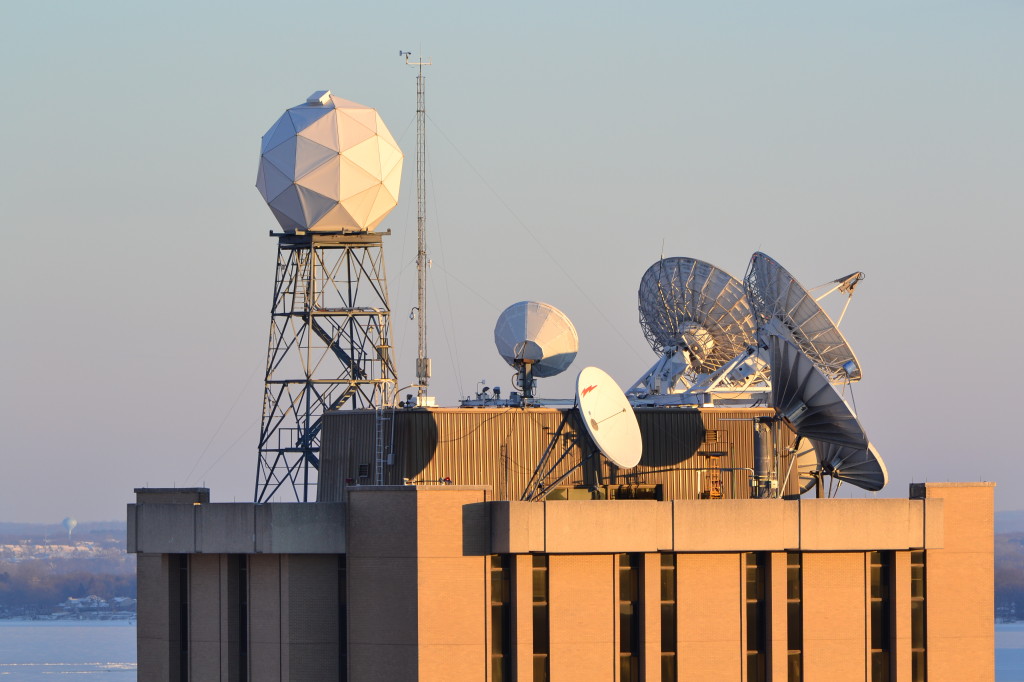AOSS building open for exploration April 5
As part of the University of Wisconsin-Madison’s weekend-long Science Expeditions event, the UW-Madison Atmospheric, Oceanic and Space Sciences (AOSS) building will open its doors to the public on Saturday, April 5, 2014, from 10 a.m. to 2 p.m. AOSS departments are participating in Science Expeditions to give visitors the chance to see all that goes on inside their building, with its iconic rooftop bedecked with satellite dishes.
Here is a rundown of special activities being offered that day:
Catch a matinee of our 3D weather globe. Satellite images generated by scientists at the Space Science and Engineering Center (SSEC) are projected onto an illuminated globe two feet in diameter. Viewers might be surprised by what they see, as storms, earthquakes, cloud motions, water vapor, climate patterns and even true-color surfaces of the planets in our Solar System appear right before their eyes.
Enjoy rooftop views of Madison, and learn about our high-tech satellite dishes and other instruments. AOSS representatives will give tours to the roof every 30 minutes starting at 10 a.m. The last tour will leave at 1:30 p.m.
Try out apps and applets designed by researchers with the Cooperative Institute for Meteorological Studies (CIMSS). These computer-based modules on weather and climate allow users to investigate the atmosphere, learn why there are seasons and phases of the moon, and even “grow” their own snowflake, thunderstorm or tornado.
Get a glimpse of your own backyard as seen from aerial photographs and satellite imagery offered by WisconsinView. This organization is dedicated to making high-quality remote-sensing imagery of the state of Wisconsin freely available to the public.
Chill out with an onsite researcher from the Antarctic Meteorological Research Center (AMRC), who will talk about what it’s like to live and work at the South Pole. Home to most of the world’s penguin population, Antarctica is also a great place to study weather and climate.
Have some hands-on fun, turning and churning the water inside our rotating tank, to see up-close how complex weather processes work. The MIT-engineered machine was initially demonstrated to UW-Madison students in a course offered by AOS Professor Galen McKinley, and has more recently been made available for public events.
“Our annual open house is a great way to showcase the exciting science going on in our building,” CIMSS Education and Public Outreach Director Margaret Mooney said. “As I like to say, Madison is the satellite capital of the world, and it’s always fun to share that story.”
See our event page for more information.
by Sarah Witman

